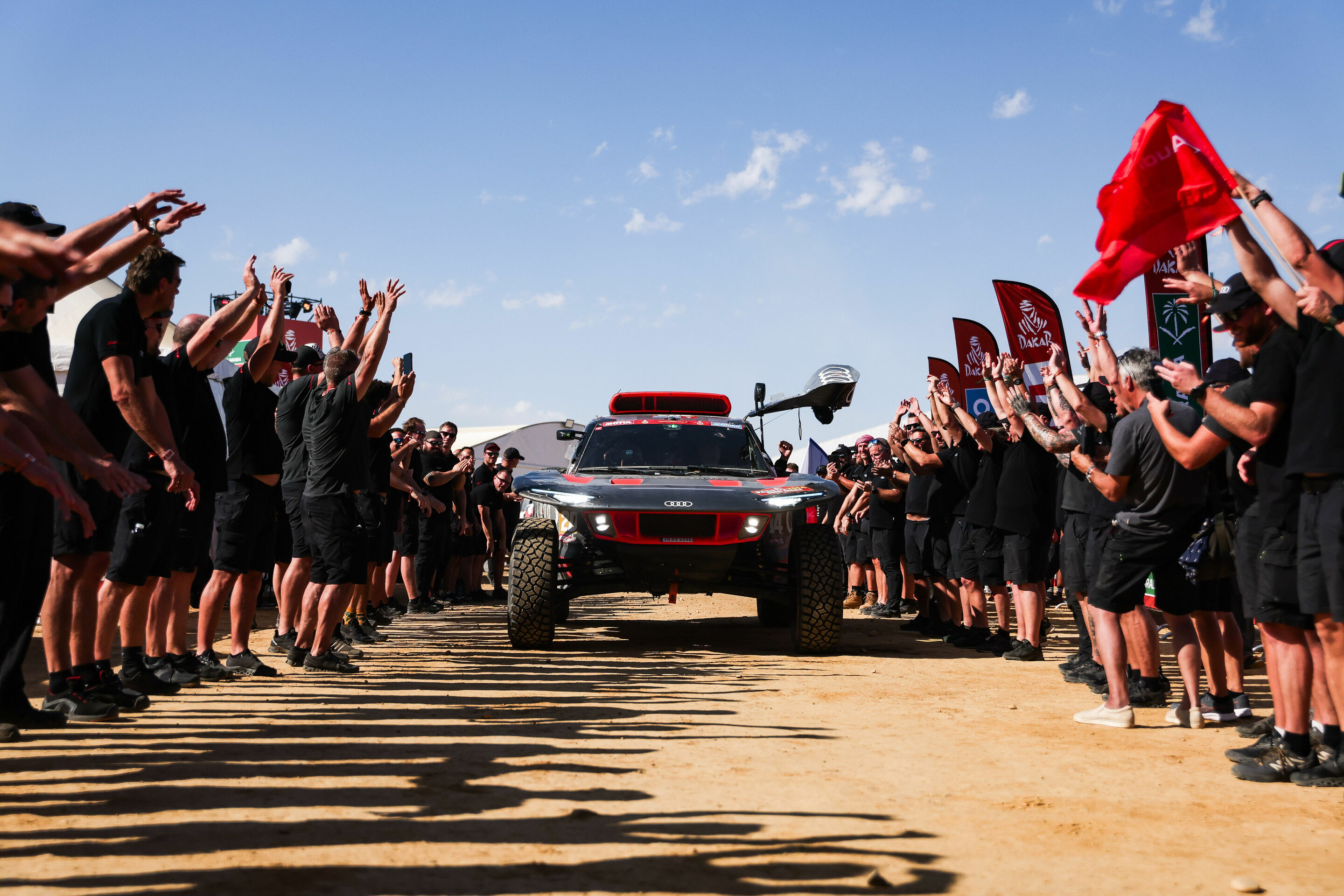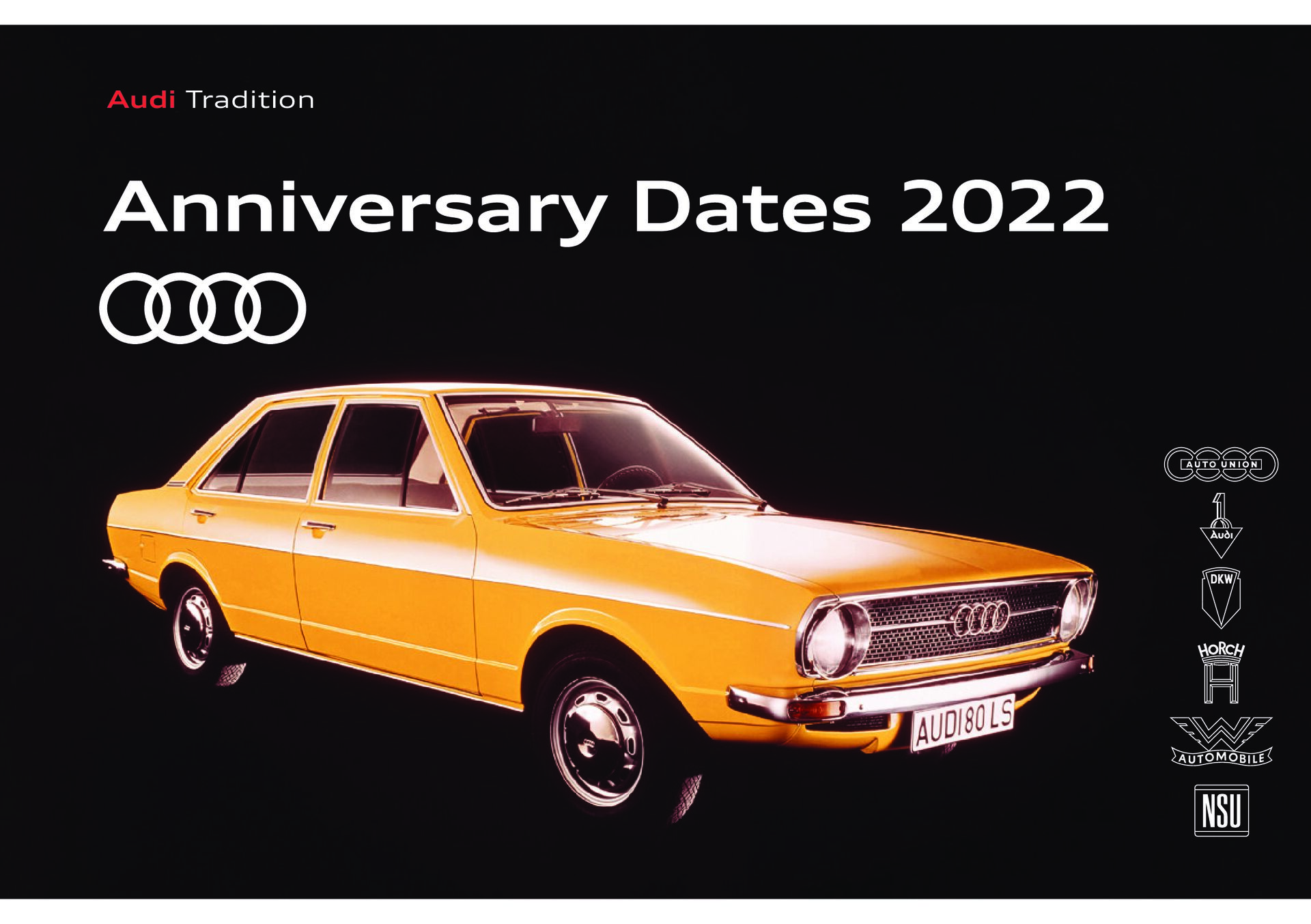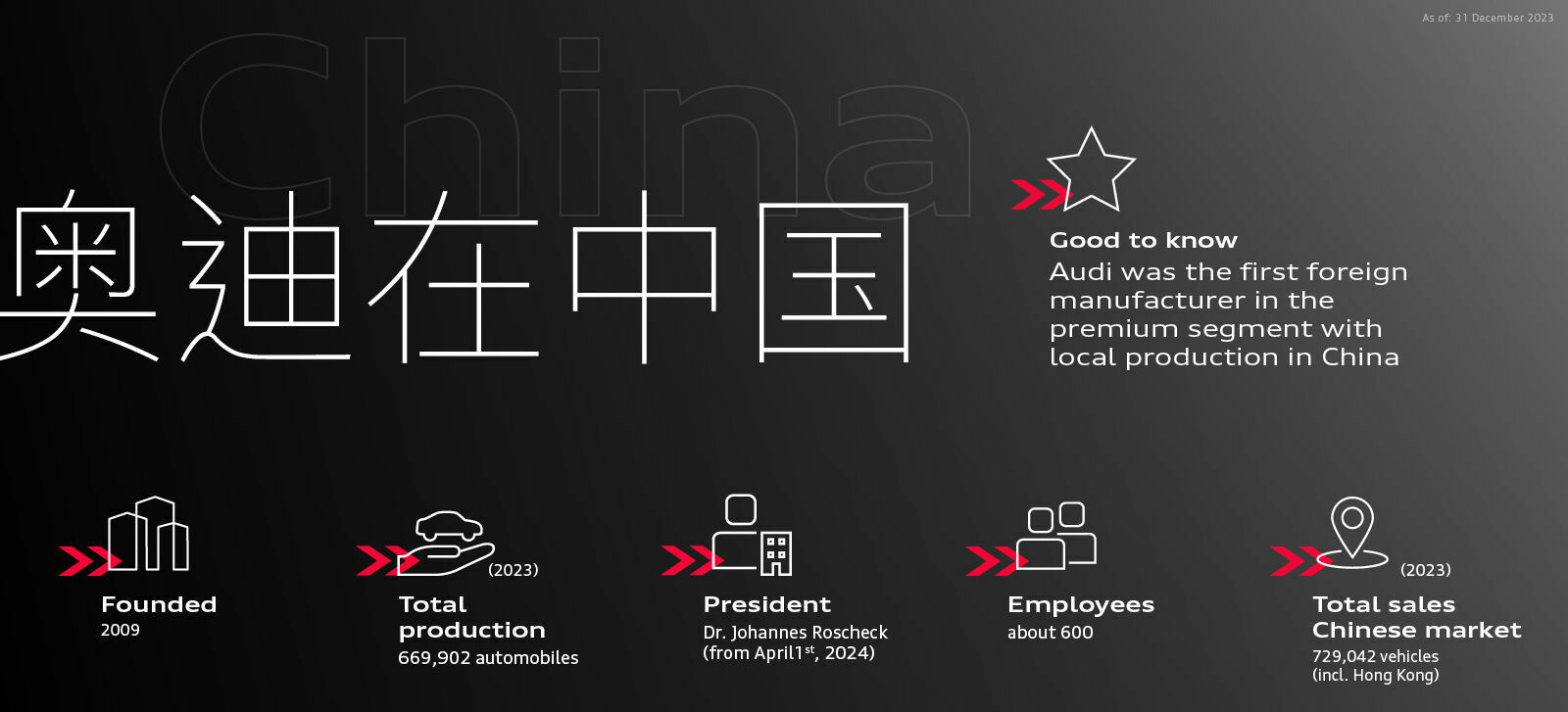Search
All results
(141)
MediaInfos
(4)
BasicInfos
(1)
Images
(107)
Videos
(5)
Publications
(5)
Technical Details
(2)

In the 2.0 TDI (150 kW front/quattro) (combined fuel consumption in l/100 km: 5.7-4.8; combined CO2 emissions in g/km: 149-125; CO2 class: E-D), these are up to 10 g/km or 0.38 l/100 km and in a 3.0 TFSI with V6 engine (270 kW quattro) (combined fuel consumption in l/100 km: 8.0-7.4; combined CO2 emissions in g/km: 182-169; CO2 class: G-F) up to 17 g/km or 0.74 l/100 km (according to the WLTP standard test procedure).1 The powertrain generator can contribute up to 18 kW (24 PS) of electric power to the drive. When decelerating, the powertrain generator recuperates energy back into the battery (regenerative braking) with up to 25 kW of power. On slight inclines and when maneuvering slowly, the car can be moved solely by the drive train generator. For example, partially electric driving can be used when driving slowly in the city, in slow-moving traffic, or outside city limits when coasting to the next village. The powertrain generator is mounted directly onto the transmission output shaft. The lithium-ion battery is based on lithium iron phosphate (LFP) and has a storage capacity of 37 ampere-hours, corresponding to just under 1.7 kilowatt hours (gross). Its maximum discharge capacity is 24 kW. The battery is integrated into a low-temperature water cooling circuit, ensuring the temperature remains within optimum conditions between 25 and 60 degrees Celsius. This is the first time that Audi has used an LFP battery for its mild hybrid systems. Compared to conventional lead-acid batteries, these offer advantages in terms of size, storage capacity, and weight and are also very cycle-resistant. This means they lose only an insignificant amount of capacity even after several thousand charging cycles. They can also be charged with high charging currents and are very resilient when delivering electrical power. The belt alternator starter is responsible for starting the engine and supplying electrical energy to the battery.

On the TFSI, the exhaust tips are integrated into the diffuser on both sides; on the TDI variants, they appear as a rectangular twin tailpipe on the left-hand side. The S model has the iconic round twin tailpipes on the right and left in a new, sharpened design. Three versions and eleven colors The range comes in three exterior versions: Exterior basic, Exterior advanced, and Exterior S line. The S model also has its own exterior. The front air intakes are larger on the exterior S line and S model, and the rear diffuser is significantly sportier. The sill trims for the exterior S line and the S model contribute to the dynamic character. The trim around the side windows is finished in anodized aluminum as standard. The exterior S line stands out with details in anodized matt anthracite aluminum, while the S model features design elements in anodized matt silver aluminum. The black exterior package is also available for the exterior S line and the S model. Here, the Audi rings at the front and rear are finished in anthracite gray. The radiator grille and grille inserts, side sill trims, door handles, the Singleframe and the diffuser attachment at the rear, window trims, and mirror housings are black, as are the aluminum trim strips around the side windows. The tailpipes also feature blacked-out exhaust tips. Customers can choose from eleven colors, including Arkona White solid finish. Glacier White, Mythos Black, Chronos Gray, and the latest colors – Grenadine Red and Horizon Blue, are available as metallic paint finishes. Firmament blue, Floret silver, and Daytona Gray pearl effect, which is exclusive to S models and vehicles with the exterior S line, complete the range. In addition, Audi Sport offers Ascari blue metallic for the exterior S line and S model. The new magnetic gray is reserved exclusively for "edition one", the exterior S line, and the S model.
 The new Audi A5 models: modern sportiness meets premium proportions
The new Audi A5 models: modern sportiness meets premium proportions
These total up to 10 g/km or 0.38 l/100 km in the 2.0 TDI (150 kW, front-wheel drive/quattro) (combined fuel consumption in l/100 km (62.1 mi): 5.6-4.7 (42.0-50.0 US mpg); combined CO2 emissions in g/km: 147-124 (236.6-199.6 g/mi); CO2 class: E–D ) and up to 17 g/km or 0.74 l/100 km in the V6 3.0 TFSI (270 kW, quattro) (combined fuel consumption in l/100 km (62.1 mi): 7.9-7.4 (29.8-31.8 US mpg); combined CO2 emissions in g/km: 180-167 (289.7-268.8 g/mi); CO2 class: G–F) up (in the WLTP driving cycle)1. The PTG can also add up to 18 kW (24 PS) of electric power to the output of the combustion engine. When decelerating, the PTG feeds energy back into the battery (recuperation) at up to 25 kW. As a result, purely electric maneuvering and parking are possible to a limited extent. Thanks to the option of using an electric air conditioning compressor, the air conditioning system can also be operated when the vehicle is stopped at traffic lights and the combustion engine is switched off. With the integrated and blending-capable brake control system (iBRS), the brake pedal and the brake hydraulics can be completely decoupled. In models with the MHEV plus system, for example, it achieves the necessary deceleration without using the friction brakes thanks to regenerative braking. This means that deceleration is initially achieved solely by recuperation. The friction brakes only kick in when the brake pedal is pressed harder. The brake feel remains unaffected by this. Motors at market launch The efficient engines in the Audi A5 family cover a wide range: from the conventionally powered entry-level model to the comfortable long-distance runner and the dynamic sports car. The packages of engines, transmissions, the degree of electrification and type of drivetrain are geared towards the expectations of our customers.
 S4 Avant TDI (251 kW)
S4 Avant TDI (251 kW)
Program for Germany, Status: 05/02/2024 1/2 Audi S4 Avant TDI Engine / electrics Engine type V6 engine Valve gear / number of valves per cylinder Roller cam follower, overhead camshafts, hydraulic valve-play compensation / 2/2 inlet/exhaust valves per cylinder Displacement in cc / bore x stroke in mm / compression 2967 / 83.0 x 91.4 / 16.3 Max. power output in kW (PS) / at rpm 251 (341) / 3800 - 3950 Max. torque in Nm (lb-ft) / at rpm 700 (516.3) / 1750 - 3250 Mixture preparation Common rail fuel injection system, intercooler Exhaust emission control NOx oxidizing catalytic converter, diesel particulate filter, exhaust gas recirculation, SCR catalytic converter Emission standard Euro 6e Max. electrical output at 12V in kW 3 On-board voltage 1 in volts 12 On-board voltage 2 in volts 48 Drivetrain / transmission Drive type quattro permanent all-wheel drive with self-locking center differential Type of rear axle differential Standard Clutch Hydraulic torque converter with lock-up clutch Transmission type 8-speed tiptronic Transmission ratio in 1st/2nd gear 5.000 / 3.200 Transmission ratio in 3rd/4th gear 2.143 / 1.720 Transmission ratio in 5th/6th gear 1.313 / 1.000 Transmission ratio in 7th/8th gear 0.823 / 0.640 Reverse gear ratio / final drive ratio 1-2 / 2-3 3.478 / 2.411 / 1.000 Suspension / steering / brakes Type and design of front-axle suspension 5-link front axle Type and design of rear-axle suspension 5-link rear axle Tires (basic) 245 / 40 R 18 Wheels (basic) Cast aluminum flow forming 8 J x 18 Steering Electromechanical steering with speed-dependent power assistance Steering ratio 15.9 Turning circle in m (ft) 11.6 (38.1) Brake system Dual-circuit brake system with black/white split for front/rear axles; front: aluminum fixed calipers; rear: floating calipers with integrated electronic parking brake Brake disk diameter front / rear in mm (in) 375 (14.8) / 330 (13.0) Performance / fuel Top speed in km/h (mph) 250 (155.3) (governed) Acceleration, 0-100 km/h (0
 S4 Sedan TDI (251 kW)
S4 Sedan TDI (251 kW)
Program for Germany, Status: 05/02/2024 1/2 Audi S4 Sedan TDI Engine / electrics Engine type V6 engine Valve gear / number of valves per cylinder Roller cam follower, overhead camshafts, hydraulic valve-play compensation / 2/2 inlet/exhaust valves per cylinder Displacement in cc / bore x stroke in mm / compression 2967 / 83.0 x 91.4 / 16.3 Max. power output in kW (PS) / at rpm 251 (341) / 3800 - 3950 Max. torque in Nm (lb-ft) / at rpm 700 (516.3) / 1750 - 3250 Mixture preparation Common rail fuel injection system, intercooler Exhaust emission control NOx oxidizing catalytic converter, diesel particulate filter, exhaust gas recirculation, SCR catalytic converter Emission standard Euro 6e Max. electrical output at 12V in kW 3 On-board voltage 1 in volts 12 On-board voltage 2 in volts 48 Drivetrain / transmission Drive type quattro permanent all-wheel drive with self-locking center differential Type of rear axle differential Standard Clutch Hydraulic torque converter with lock-up clutch Transmission type 8-speed tiptronic Transmission ratio in 1st/2nd gear 5.000 / 3.200 Transmission ratio in 3rd/4th gear 2.143 / 1.720 Transmission ratio in 5th/6th gear 1.313 / 1.000 Transmission ratio in 7th/8th gear 0.823 / 0.640 Reverse gear ratio / final drive ratio 1-2 / 2-3 3.478 / 2.411 / 1.000 Suspension / steering / brakes Type and design of front-axle suspension 5-link front axle Type and design of rear-axle suspension 5-link rear axle Tires (basic) 245 / 40 R 18 Wheels (basic) Cast aluminum flow forming 8 J x 18 Steering Electromechanical steering with speed-dependent power assistance Steering ratio 15.9 Turning circle in m (ft) 11.6 (38.1) Brake system Dual-circuit brake system with black/white split for front/rear axles; front: aluminum fixed calipers; rear: floating calipers with integrated electronic parking brake Brake disk diameter front / rear in mm (in) 375 (14.8) / 330 (13.0) Performance / fuel Top speed in km/h (mph) 250 (155.3) (governed) Acceleration, 0-100 km/h (0
 Year by year: The most important successes of Audi in motorsport
Year by year: The most important successes of Audi in motorsport
1981 3 victories in the World Rally Championship (Audi quattro) 1982 Winner manufacturers’ classification World Rally Championship (Audi quattro) 1983 Winner drivers’ classification World Rally Championship (Audi quattro) 1984 Winner drivers’ and manufacturers’ classification World Rally Championship (Audi quattro) 1985 Winner Rally San Remo (Audi Sport quattro S1) Winner Pikes Peak Hillclimb Race (Audi Sport quattro S1) Winner Rally Hong Kong–Beijing (Audi quattro) 1986 Winner Pikes Peak Hillclimb Race (Audi Sport quattro S1) Winner Rally Hong Kong–Beijing (Audi quattro) 1987 Winner Safari Rally (Audi 200 quattro) Winner Pikes Peak Hillclimb Race (Audi Sport quattro S1) 1988 Winner TransAm Series (Audi 200 quattro) 1989 7 victories IMSA GTO Series (Audi 90 quattro) 1990 Winner German Touring Car Championship (Audi V8 quattro) 1991 Winner German Touring Car Championship (Audi V8 quattro) 1993 Winner French Touring Car Championship (Audi 80 quattro) 1994 Winner Italian Touring Car Championship (Audi 80 competition) 1995 Winner Italian Touring Car Championship (Audi A4 quattro) Winner Touring Car World Cup (Audi A4 quattro) 1996 Winner Super Touring Car Championships Australia, Belgium, Germany, Great Britain, Italy, Spain and South Africa (Audi A4 quattro) 1997 Winner Central European Touring Car Championship (Audi A4 quattro) 1999 3rd place Le Mans 24 Hours (Audi R8R) Winner German Super Touring Car Championship (Audi A4 quattro) Winner Swedish Touring Car Championship (Audi A4 quattro) 2000 Winner Le Mans 24 Hours (Audi R8) Winner Sebring 12 Hours (Audi R8) Winner ‘Petit Le Mans’ (Audi R8) Winner American Le Mans Series (Audi R8) 2001 Winner Le Mans 24 Hours (Audi R8) Winner Sebring 12 Hours (Audi R8) Winner ‘Petit Le Mans’ (Audi R8) Winner American Le Mans Series (Audi R8) Winner European Le Mans Series (Audi R8) Winner Speedvision GT (Audi S4 Competition) Winner Swedish Touring Car Championship (Audi A4 quattro) 2002 Winner Le Mans 24 Hours (Audi R8) Winner Sebring
 Anniversary Dates 2022
Anniversary Dates 2022
Anniversary Dates 2022 Audi Tradition Audi Tradition 2 Anniversary Dates 2022 Contents Anniversaries in Our Corporate History Autumn 1997 25 years of Audi AI 2 and A2 prototypes ....................4 September 1997 25 years since market launch of Audi S4 (B5) ...........5 1997 25 years since market launch of Audi A6 (C5) ...........6 September 1997 25th anniversary of death of Ludwig Kraus ..............7 September 1992 30 years since first Audi Avant in the B-series ...........8 Autumn 1982 40 years of third-generation Audi 100 .....................9 April 1977 45 years of five-cylinder engines at Audi ................10 August 1977 45 years since first Audi 100 Avant (C2) .................11 1972 50 years since first Audi 80 (B1) ............................12 August 1972 50 years since Dr. Piëch joined Audi .......................13 September 1967 55 years since unveiling of NSU Ro 80 ...................14 September 1957 65 years since NSU resumed car manufacturing .....15 February 1957 65 years since first NSU rotary piston engine .........16 June 1932 90 years since founding of Auto Union AG ..............17 June 1922 100 years of DKW motorcycle manufacturing ........18 June 1922 100 years since Dr.




